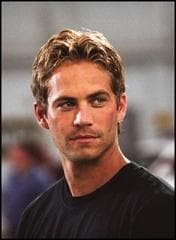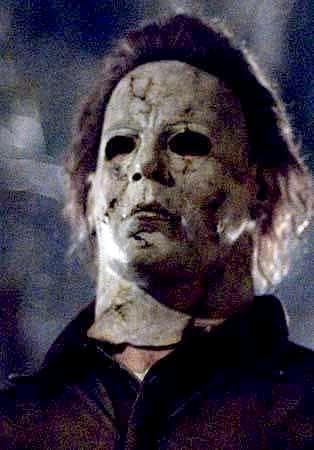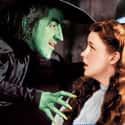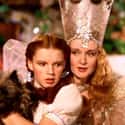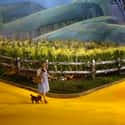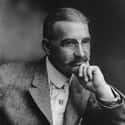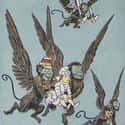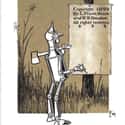-
(#7) The Wicked Witches Represent Powerful Interests In American Politics
The two wicked witches in The Wizard of Oz represent powerful forces in American politics that threaten the country. The Wicked Witch of the East, who Dorothy smashes with her house, is a thinly-veiled reference to Wall Street and all the moneyed interests in the 1890s. She represents financial-industrial interests, and she is the one who stole the Tin Man's heart and enslaved the Munchkins.
The Wicked Witch of the West similarly symbolizes the rich in America's west: bankers, railroad owners, and wealthy oilmen like J.D. Rockefeller. Just as the Wicked Witch of the East enslaves the Munchkins, the witch in the west enslaves the Winkies, who represent Asian laborers in America's West. She is finally dissolved with water – another allusion to the monetary debate over liquidity.
-
(#12) There's Symbolism Everywhere In The Wizard Of Oz
The symbolism in The Wizard of Oz runs incredibly deep. The cyclone, some argue, represents the rise of Populism which swept the Midwest. The poppy fields represent the anti-imperialist movement, which distracted William Jennings Bryan from monetary issues (by putting him to sleep). Even Dorothy's companion Toto has been imagined as a symbol of prohibitionists, because he "trotted along soberly behind her."
The good witches, too, represent supporters of Populism. The Good Witch of the North symbolizes the upper Midwest, which voted for Bryan in the 1896 election and propelled Populism to the national stage. Glinda, the Good Witch of the South, represents Southern Populists who argued in favor of free silver – just like Glinda is the only one who understands the power of Dorothy's silver shoes. The East and West, which were against Populism, are called evil, while the North and South are good for supporting Populism.
And three colors come up again and again in The Wizard of Oz: gold, silver, and green. The colors of money.
-
(#8) It Turns Out A Lot Of The Wizard Of Oz Is About . . . Fiscal Policy
The Wizard of Oz is an exciting story of a young girl's journey to find her way back home – and her realization that she had the power within her all along. But according to scholars who see political symbolism in the story, it's also all about monetary policy. That's right. In the 1890s, the big debate in American politics was about the gold standard. Under the gold standard, America's paper currency was backed by gold, and anyone could take a dollar to the bank and receive a dollar's worth of gold.
But the gold standard was causing huge monetary problems for America's farmers. Prices were falling. Farmers were defaulting on their loans. Bankers were seizing farms and selling them off, meaning farmers lost their jobs and their homes. And many farmers blamed the gold standard. Before 1873, a dollar could be exchanged for gold or silver - and farmers wanted a return to "free-silver," because the abundance of silver would cause inflation, making it easier for farmers to pay back their loans.
All of this might seem removed from The Wizard of Oz until you consider two things: the importance of the Yellow Brick Road (representing gold) and Dorothy's slippers––which weren't ruby in the book. They were silver.
-
(#13) Baum's Motives Remain A Mystery
But did L. Frank Baum really encode a secret populist message in his children's book? Some have argued that Baum, who was not himself a populist, would not have included a hidden message in his book. In fact, evidence shows Baum voted for Republican McKinley over William Jennings Bryan. Still, that doesn't negate the symbolism of the book. Even if Baum himself did not champion Populism, his book can still be read as a critique of American politics in the 1890s. In the end, we may never know Baum's true intent. But regardless, The Wizard of Oz also tells the story of American politics in the 1890s. As scholar Quentin Taylor concludes,
"Oz operates on two levels, one literal and puerile, the other symbolic and political. Its capacity to fascinate on both levels testifies to its remarkable author's wit and ingenuity."
-
(#9) The Flying Monkeys Are Super Racist
The flying monkeys do the evil bidding of the Wicked Witch of the West. And according to Littlefield, they represent the plains Indians, who were still fighting for their survival for their survival against the United States government in the late 1800s. Baum's description of the flying monkeys makes the connection clear. "Once," their leader explains, "we were a free people, living happily in the great forest, flying from tree to tree, eating nuts and fruits, and doing just as we pleased without calling anybody master." But all the changed then Oz arrived "to rule over this land."
L. Frank Baum had strong opinions about America's Indians. And they were super racist.
"The Whites, by law of conquest, by justice of civilization, are masters of the American continent, and the best safety of the frontier settlements will be secured by the total annihilation of the few remaining Indians. Why not annihilation?"
After advocating for genocide, Baum added,
"Having wronged them for centuries we had better, in order to protect our civilization, follow it up by one more wrong and wipe these untamed and untamable creatures from the face of the earth."
With those views, it's no surprise that Baum made the flying monkeys evil.
-
(#1) The Wizard Of Oz Was Written In The 1890s, And It Carried A Secret Message That Wasn't Decoded Until 1964
Although the Wizard of Oz might be most famous today for the 1939 movie, starring Judy Garland, the book was originally written in the 1890s by author L. Frank Baum. And it turns out that the Wizard of Oz is full of hidden political symbolism, which sometimes seems barely hidden at all.
But no one noticed the clear parallels to American politics in the 1890s until a historian named Henry Littlefield published an analysis of The Wonderful Wizard of Oz in 1964. For decades, people had dismissed Baum's book as a fairytale for children. But in fact, it carried strong messages about the biggest problems facing America at the end of the nineteenth century.
New Random Displays Display All By Ranking
About This Tool
The Wizard of Oz is a fairy tale film produced by MGM. The film was adapted from Lyman Frank Baum's book The Wonderful Wizard of Oz and the musical of the same name. It was released in the United States in 1939. It is considered a classic children's film, full of imagination and vitality, there are all kinds of magical and interesting fairy tale characters and cheerful singing and dancing scenes. It is hard to imagine that this movie will have any political significance.
This page displays 13 entries, we collected some secret political symbolism that people never knew was hidden within The Wizard Of Oz. Obviously, everyone can have their own opinions on this movie.
Our data comes from Ranker, If you want to participate in the ranking of items displayed on this page, please click here.

